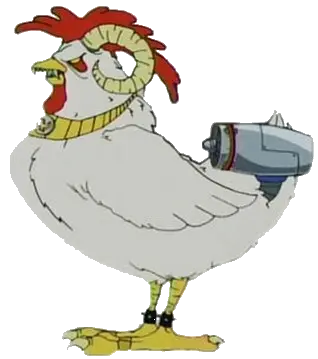“Okay children, this story is about a guy getting buried alive inside a wall…”
“For the love of God, Montresor!”
One of the mandatory texts in my country’s curriculum was the story of workers building a church and the head architect had to bury his pregnant wife alive into one of the walls, because creation requires sacrifice. The entire crew killed themselves once the building was complete. But that’s in high-school.
The first story that starts the 1st grade textbook is about a goat with three kids. The wolf comes and kills two of the kids while the mother is out (third kid hid too well). He then places their severed heads in the window, grinning, to make it look like they’re waiting for their mom. The grieving mother proceedes to invite the wolf to a feast (he’s family), which is actually a trap to burn him alive as revenge.
what are the names of the stories? They sound good
Some info on the first one: https://en.wikipedia.org/wiki/Meșterul_Manole
I can only find the full text in the original Romanian or in Spanish.
The second one is The Goat and Her Three Kids, an adaptation of the Grimm fairy tale The Wolf and the Seven Young Goats, but somehow much more grim. I can’t find a full translation, but the Wikipedia article tells the story in good detail. The story has been adapted into a horror movie in 2022.
If anyone else missed being scarred by any of these mentioned:
Summaries incoming:
The Cask of Amontillado by Edgar Allan Poe. In this tale of revenge, the narrator, Montresor, lures his enemy, Fortunato, into the catacombs under the pretense of tasting a rare wine called Amontillado. Once deep within the catacombs, Montresor chains Fortunato to a wall inside a niche and then seals him in by building a brick wall, leaving him to die. The story explores themes of revenge, pride, and the darker aspects of human nature.
“Thank You, Ma’am” by Langston Hughes is about a young boy named Roger who tries to steal a woman’s purse but is caught. Instead of turning him in, the woman, Mrs. Luella Bates Washington Jones, takes Roger to her home, offers him food, and talks to him about trust and respect. She treats him with kindness and understanding, explaining that everyone makes mistakes. Before letting him go, she gives him money to buy the shoes he wanted, teaching Roger a lesson in compassion and second chances. The story emphasizes the power of empathy and human connection.
“An Occurrence at Owl Creek Bridge” by Ambrose Bierce is a Civil War-era story about Peyton Farquhar, a Southern plantation owner condemned to be hanged by Union soldiers on a railroad bridge. As the noose tightens, the story shifts to what seems like Farquhar’s miraculous escape. He imagines freeing himself, evading gunfire, and returning home to his family. However, just as he is about to embrace his wife, the narrative abruptly reveals that his escape was a hallucination in the moments before his death. Farquhar never escaped; he is hanged, and the story ends with his lifeless body swinging beneath the bridge. The story explores themes of time, reality, and the psychological effects of facing death.
The Yellow Wallpaper by Charlotte Perkins Gilman is a short story about a woman suffering from postpartum depression. Her husband, John, a physician, prescribes her a “rest cure,” confining her to a room in a secluded mansion and forbidding her from engaging in creative activities like writing. As she spends more time in the room, she becomes obsessed with the room’s yellow wallpaper, believing she sees a woman trapped behind its patterns. Her isolation and lack of mental stimulation worsen her condition, leading her to believe she must free the woman in the wallpaper. In the end, she spirals into madness, tearing down the wallpaper as her mind unravels. The story critiques the oppressive treatment of women and the misunderstanding of mental illness during that time.
The story of Charlie Gordon comes from Flowers for Algernon by Daniel Keyes. It follows Charlie, a man with an intellectual disability, who undergoes an experimental surgery to increase his intelligence. The operation, which had previously been tested on a mouse named Algernon, is initially successful, and Charlie’s IQ skyrockets. As he becomes more intelligent, Charlie begins to understand the complexities of the world, including the cruelty he faced from people who once mocked him. However, as time passes, Charlie discovers that the effects of the surgery are temporary. Algernon’s intelligence declines, and Charlie realizes the same fate awaits him. The story ends with Charlie’s regression to his former state, but he retains a deeper awareness of himself and the world around him. The story explores themes of identity, intelligence, and the treatment of individuals with disabilities.
“A Good Man Is Hard to Find” by Flannery O’Connor is a Southern Gothic story about a family road trip that takes a tragic turn. The story focuses on a manipulative grandmother who, despite warnings of a criminal called “The Misfit” being on the loose, insists the family visit an old plantation. On the way, their car crashes, and they encounter The Misfit and his gang. The grandmother tries to appeal to The Misfit, claiming he’s a “good man” and urging him to pray. However, her pleas fail, and The Misfit and his gang murder the entire family. In her final moments, the grandmother experiences a brief moment of grace and compassion, touching The Misfit before she is killed. The story explores themes of morality, redemption, and the complexity of what it means to be a “good” person.
The Last Spin by Evan Hunter is a short story about two teenage boys, Tigo and Danny, who belong to rival gangs. To settle a dispute between their gangs, they agree to play Russian roulette. As they take turns pulling the trigger, they start talking and realize they have much in common, developing a sense of camaraderie. Despite this newfound bond, they must continue the game due to their loyalty to their gangs. Tragically, on Danny’s final spin, the gun fires, killing him, leaving Tigo devastated. The story explores themes of senseless violence, loyalty, and the futility of gang conflicts.
The Lottery by Shirley Jackson is a short story set in a small, seemingly idyllic town where the residents gather annually for a lottery. Each family draws a slip of paper from a box, and the one who draws a slip with a black dot is chosen. The story builds suspense as the reader is unaware of the lottery’s purpose until the shocking twist: the “winner” of the lottery, Tessie Hutchinson, is stoned to death by the townspeople, including her own family. The story critiques blind adherence to tradition, conformity, and the capacity for cruelty in ordinary people.
These are great, but I want to point out that Occurrence at Owl Creek Bridge is actually based as hell and a whirlwind tour of justice in action, as a Confederate slaver, self described “student of hanging,” traitor and saboteur is hanged while fantasizing about how cool it’d be if he miraculously survived the consequences of his despicable and pointless actions.
The most interesting metaphor at work is the comparison of the Confederacy itself to the school of Romantism getting a reality check from the Realism of the Union, and how even the fantasy itself is futile, as the savvy reader should have asked themselves “What then?” even if he actually did escape. The Union forces are well aware who Farquhar is, as he learned about the bridge from a disguised Union Scout who clearly understood his intentions.
The Lottery messed me up, as did Flowers for Algernon. The rest look like a great reading list and worth picking up. Might check the library for some of those.
I love the quote at the end of A Good Man is Hard to Find. “She would’ve been a good woman if it were someone there to shoot her every minute of her life.” She and her family got shot because she stupidly told the Misfit she knew who he was, making the whole family witnesses. She also caused the accident in the first place with her bad navigation and scaring the cat.
For me the most haunting thing I ever read in English class was The Chrysalids by John Wyndham.
In a sci-fi future post nuclear war the survivors in Labrador on the east coast of Canada completely reject science and all non biblical knowledge. They think everyone not made in their view of gods image needs to die, and that includes their children who begin to develop mutations due to the radiation.
The kids spend a lot of the book trying to escape the crazy, uneducated religious population and try to find a way across the nuclear wasteland that is the centre of Canada and the US in order to get to the Scientific society of survivors, who aren’t going to try and kill them, on the island of “Sealand”
I have never believed in religion in spite of being raised in a Catholic family. I read the Bible front to back young and realized it was nothing but contradictory nonsense and fantasy. For me, this novel my public high school teacher assigned to us was pure nightmare fuel.
That’s a fantastic story, so well written I couldn’t put it down.
What happens when they get there? Given that the people who pushed back against eugenics weren’t rationalists.
Pretty hard line atheist myself but the simple historical reality is that that movement was founded by and supported today by extremely well educated and respected scientific and “rational” figures, like Mr Effective Altruism himself, Professor of Bioethics, Peter Singer, who argued for the infanticide of disabled infants.
Turns out the city is full of telepaths like them and they refer to themselves as the “New People”
Oh jeez, a genetically superior humanity you might say?
I was assuming you meant like, they’ve got six toes but so does everyone.
There’s a girl with an extra toe in there too. The telepath thing is just one possible mutation, from what I recall. In the more irradiated parts the mutations get more extreme.
Having 6 toes is as common as webbed feet in today’s world, and its not all that uncommon (I was born with 6 toes, my dad had 6 toes and fingers). They don’t have bones and surgeons just cut them off at birth these days.
In my mind the more fantastical mutations in the book make it a bit more far fetched and give it that sci-fi feel.
*Wyndham
I am once again reminded of Flowers for Algernon. I have not read it since 8th grade.
Charlie Gordon haunts my nightmares
deleted by creator
Oh, beautiful short story. Thanks.
I, a high school English teacher, reread “A Good Man is Hard to Find” today. Shit hits different when you have your own kids.
“The cold equations”, checking in.
The Lottery and The Last Spin checking in
Ðere Will Come Soft Rains is one ðat is incredibly bleak and yet should 1000% still be mandatory reading.
Especially for students wið future political aspirations.
What’s with the funky D?
They’re using
ThornEdd, the single character that represented the Th sound in old English (still used in Icelandic).It’s a harmless little quirk in their own writing, although editing the title of a book to include it seems pretty silly.
So I looked it up. The character they used is “eth”. Which historically was used interchangeably with thorn at some points in time. Thorn became more popular entering Middle English while eth was more popular in Early English, though in very early English neither was present. Icelandic today uses both, with thorn more popular at the beginning of words, and eth used elsewhere.
Also, capital eth (Ð) should not be confused with “capital D with stroke” (Đ), which is used in Vietnamese to represent the /d/ sound (because the “D” character represents /j/—at least in southern Vietnamese dialects, it’s a different sound in northern Vietnamese). Other languages also use D with stroke for their own purposes. The lower case D with stroke is “đ”, different from eth.
Except it’s not thorn. Thorn is Þ.
You are correct. In my defence:
In Old English, ⟨ð⟩ (called ðæt) was used interchangeably with ⟨þ⟩ to represent the Old English dental fricative phoneme /θ/ or its allophone /ð/, which exist in modern English phonology as the voiceless and voiced dental fricatives both now spelled ⟨th⟩.
Oh ha. Looks like you looked it up as I was looking it up.
Still, whatever it is, doesn’t really answer the original question which was about why the user above was doing it.
I think he/she is on a mission to reform English orthography. This is their personal evangelism. I’m ok with it.
The date August 4th, 2026 is burned into my memory.
This is a really good one.
The Yellow Wallpaper strikes again
[Cries in Watership Down]
The only thing I can think of is Thank You, Ma’am by Langston Hughes, not the story, but the discussion from my classmates. They really wanted to lynch that kid for trying to steal a pocket book.
Poems also count, right?
The Charge of the Light Brigade by Alfred, Lord Tennyson
“An Occurrence at Owl Creek Bridge” checking in.
Read that for the first time a couple months ago; it very much felt like where I’m at now with everything.













